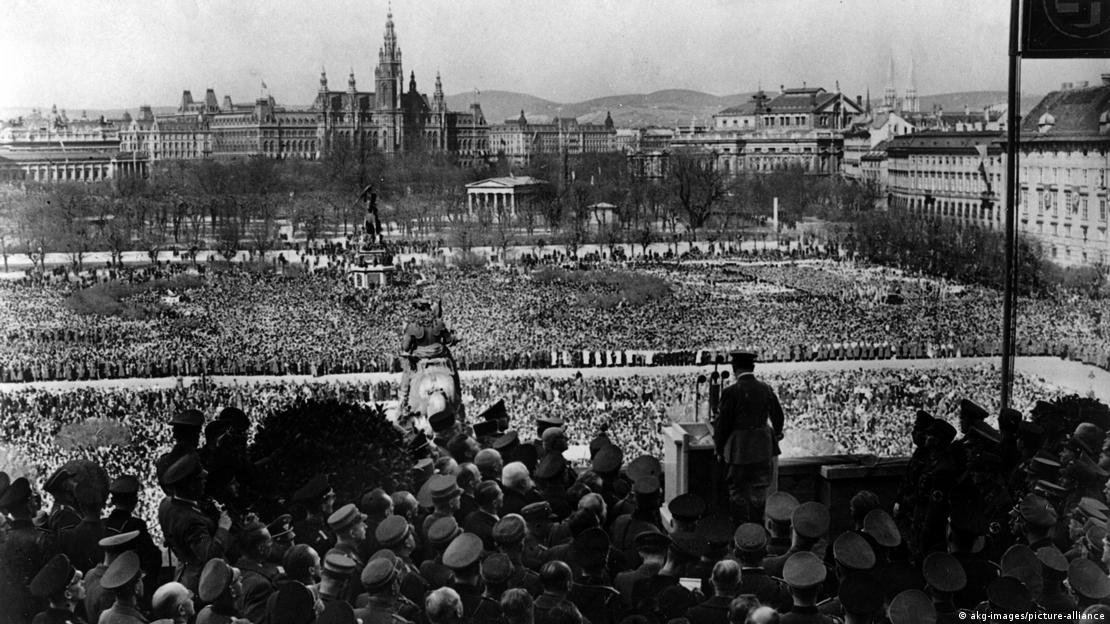The authorities in Vienna are wondering how to change his image
Behind two sets of heavy doors and a large steel partition, Monika Sommer, director of the House of Austrian History at Vienna’s Hofburg Palace, looks out at the country’s most controversial building: the so-called Hitler Balcony.
Here on March 15, 1938, Hitler addressed a jubilant crowd of 200,000 to announce his country’s entry into the “German Reich.” It marked the Anschluss or annexation of Austria, and the crowds below are seen today as evidence of Austria’s support for Nazi rule.
Access to the balcony was blocked for many years, but its place in Austrian politics and history was brought back to the fore after the youth wing of the right-wing Freedom Party of Austria (FPÖ) used it in an election video.
The FPÖ, which was founded in the 1950s by former members of the Nazi party, is best known for the Ibiza affair, a corruption scandal that ousted its leader and forced it out of a coalition government that returned it to opposition. However, it is now leading the polls, winning around 27% of the vote, and has formed coalition governments with the centre-right Austrian People’s Party (ÖVP) in three regions.
Under its leader Herbert Kickle, the FPÖ is believed to have moved further to the right and embraced radical elements. His affinity for Viktor Orbán’s politics in Hungary was dubbed the Hungarian-Austrian Empire by Politico.
In the FPÖ video, a narrator opposes “crime, mass migration, selfishness, globalization, sex madness, Islamization, population exchange.”
The video then shows young members looking up at the balcony. “We want a future,” says the narrator.
Today, the balcony is closed to the public, but Sommer is working to devise a new role for it and prevent groups like the FPÖ from using it in this way.
“It’s really this turning point in the video where they analyze the present and then focus on the future. Then they use the balcony shot. In the video, it means the times are changing. It’s eerie,” she commented.
The video marks a worrying turning point for Austria’s far right, said Stefan Benedik, the museum’s lead curator. He says that until now, Austrian politics has maintained a stable consensus on Holocaust commemoration, and in the past 30 years has taken a harder line, acknowledging its complicity in Nazi atrocities.
“This video is really key because it’s the first hint that the far right is leaving this consensus. They’re ready to implement this symbol, the balcony really replaces the whole theme of National Socialism in Austria.”
In response to the video, the Office for the Protection of the Constitution has reportedly filed charges against the group.
In the House of Austrian History, visitors can vote on the future of the balcony. So far, ideas include memorial engravings and even a clothesline to be hung above the balcony, reminding visitors of Austria’s dirty laundry.
Since 1938, the only person to have given a speech from the balcony has been Holocaust survivor Elie Wiesel. “The balcony is nothing… Purification, change cannot come from the balcony. It must come from below,” he said in 1992. But as fewer and fewer Holocaust survivors remain to tell their stories, the symbolic power, that the balcony holds for the right could grow again, Sommer said.
Photo: Giant crowds gathered on Heldeplatz to cheer Hitler as he delivered his Anschluss speech on March 15, 1938 Image: akg-images/picture-alliance












